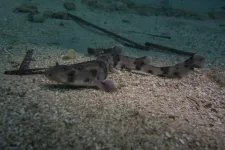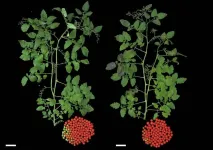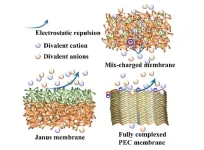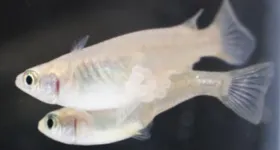(Press-News.org) Overfishing, illegal fishing and increasing marketing of shark meat pose significant threats to the more than 80 species of sharks and rays that inhabit the Mediterranean Sea, according to a new study.
The research examined current levels of legislation in place to protect elasmobranch populations (which include sharks, rays and skates) within each of the 22 coastal states of the Mediterranean region.
Across those countries – stretching from Spain and Morocco in the west to Israel, Lebanon and Syria in the east – the researchers identified more than 200 measures that concern elasmobranchs in some way, ranging from national legislation to implemented conservation efforts by various non-governmental organisations (NGOs).
European Union countries generally led the implementation of more measures than non-EU ones, with Spain having the highest number of measures in place. Governments were responsible for leading 63% of measures, mainly relating to legal requirements.
However, while elasmobranchs have made it onto many policy agendas, the study found considerable differences in how effectively any legislation was being monitored with no single source for tracking progress in the conservation and management of sharks at national levels.
Experts and NGOs across the region also highlighted that sharks are increasingly being landed intentionally and unintentionally by fishers, often to meet the demand for shark products.
However, there is often little control in place where sharks are landed, leading researchers to call for increased monitoring to protect threatened species, in addition to more public education and incentives for fishers to use equipment that is less threatening to shark species.
The research, published in the journal Biological Conservation, represents the first region-wide assessment of actions being taken to protect shark populations through international law.
It was led by Dr Lydia Koehler and Jason Lowther, both experts in environmental law from the School of Society and Culture at the University of Plymouth.
Dr Koehler, Associate Lecturer and a member of the IUCN World Commission on Environmental Law (WCEL), said: “Sharks have been part of the marine ecosystem for millions of years with an evolutionary history that predates the dinosaurs. There are over 1,000 species of elasmobranchs worldwide, and they fulfil a variety of ecological roles, whether as apex predators that maintain healthy populations of prey species or a food source for other predators. However, many shark species in the Mediterranean have seen drastic declines in past few decades with over half of the species being threatened by extinction, largely due to overfishing and related pressures such as bycatch. Finding effective ways to conserve them is, therefore, of critical importance.”
Mr Lowther, Associate Professor of Law, added: “This study has shown substantial differences in countries’ efforts around shark conservation. That may be linked to access to resources, available expertise and capacities, and a general willingness to develop and implement measures in light of other competing pressures. Achieving positive outcomes for these species requires not only government support but also sustained political will across election periods and a steadfast long-term commitment to driving change. It also requires the integration of communities in the Mediterranean region, and our view is that this work presents a starting point in that process.”
Recommendations to protect the Mediterranean’s sharks
In the study, the authors have listed a number of recommendations which they feel could be used to better conserve and protect shark and ray species right across the Mediterranean Sea. They are:
Increase transparency throughout the system: Improve reporting templates to facilitate more detailed answers on actions taken, and account for specific contributions by other key actors, would facilitate increased transparency;
Expand cooperation and integration of the fishing community and use of social science: Shark governance issues are unlikely to be solved without the support of the fishing community, and community dependencies and structures must be considered for successful shark governance;
Extend spatial conservation measures: Amending the objectives and management for existing Marine Protected Areas that host sharks could be one way to approach better conservation for these species;
Increase compliance to reduce bycatch: Effectively applying existing legislation could significantly increase knowledge on incidental shark bycatch in the region;
Increase access to funding, especially for collaborative, cross-country actions: A review of existing and potential funding opportunities and priorities could help support the identification of conservation and management actions for threatened and endangered shark and ray species;
Tailor research to policy needs to establish better regulatory measures: Coordinated research efforts across the region are needed to enable stock assessments and a wider understanding of trends in pressures, populations, etc. END
Mediterranean sharks continue to decline despite conservation progress
2025-01-08
ELSE PRESS RELEASES FROM THIS DATE:
New treatment option for severe hypertrophic cardiomyopathy in children shows promise
2025-01-08
Trametinib, a mitogen-activated protein kinase (MEK) inhibitor, reduces mortality and morbidity in children with severe hypertrophic cardiomyopathy (HCM) caused by pathogenic variants in the RAS/MAPK pathway, according to a study published today in JACC: Basic to Translational Science. The study provides strong evidence for personalized treatment targeting the underlying genetic causes of RASopathies, a group of rare disorders that often lead to life-threatening cardiac complications.
“Our findings represent a breakthrough in the treatment of HCM in children, particularly those suffering from severe forms of the disease due to genetic variants in the RAS/MAPK ...
Repairing a domestication mutation in tomato leads to an earlier yield
2025-01-08
Genome editing with CRISPR-Cas is often associated with the induction of mutations. However, a team of researchers from the Swiss University of Lausanne now shows that it can also be used to repair natural mutations.
All living organisms mutate, which is a major driver of biodiversity and evolution. Humans have been domesticating plants for thousands of years, by selecting mutations that lead to favorable characteristics such as larger or more numerous fruits. However, this process often caused the ...
Focal volume optics for composite structuring in transparent solids
2025-01-08
For a long time, an ultrafast laser has been applied as a point-typed energy source to trigger various material modifications, and the profile of light intensity is mainly considered a Gaussian type. Therefore, the actual morphology and evolution of the light field in the focal volume have been overlooked.
In International Journal of Extreme Manufacturing, researchers indicates that the 3D spatial distribution of the light field at the focus can possess finer structures and is tunable, which offers a novel strategy for highly controllable micro-nano fabrication with more degrees of freedom beyond conventional point-by-point optical modification.
It is proposed and experimentally demonstrated ...
Novel mix-charged nanofiltration membrane developed for high-salinity wastewater treatment
2025-01-08
A research team led by Prof. WAN Yinhua at the Institute of Process Engineering (IPE) of the Chinese Academy of Sciences has recently developed an innovative mix-charged nanofiltration (NF) membrane featuring horizontal charge distribution, designed specifically for wastewater treatment. This novel membrane exhibits remarkable salt permeation and organic matter retention capabilities as well as antifouling properties, making it particularly effective for treating high-salinity organic wastewater.
The findings ...
Fishy business: Male medaka mating limits revealed
2025-01-08
Working out the kinks of mating in the animal kingdom helps to gain insights into the survival of species. Among animals that have multiple partners who deposit eggs outside their body, such as most fish, the males release sperm several times a day, but producing these gametes requires energy and time.
Osaka Metropolitan University experts on fish behavior have recently uncovered a daily mating capacity for medaka. In findings published in Royal Society Open Science, Graduate School of Science Specially Appointed Dr. Yuki Kondo, Specially Appointed Professor Masanori Kohda, and Professor Satoshi Awata detailed the effects of continuous mating by medaka ...
Morning coffee may protect the heart better than all-day coffee drinking
2025-01-08
People who drink coffee in the morning have a lower risk of dying from cardiovascular disease and a lower overall mortality risk compared to all-day coffee drinkers, according to research published in the European Heart Journal [1] today (Wednesday).
The research was led by Dr Lu Qi, HCA Regents Distinguished Chair and Professor at the Celia Scott Weatherhead School of Public Health and Tropical Medicine at Tulane University, New Orleans, USA. He said: “Research so far suggests that drinking coffee doesn’t raise the risk of cardiovascular disease, and it ...
For many low-income single moms, government aid serves as their paid family leave, study shows
2025-01-08
CORVALLIS, Ore. – The majority of low-income single mothers in Oregon who rely on federal cash assistance around the time of childbirth are in the program for less than a year, suggesting they’re using it as a form of paid family leave, Oregon State University research shows.
The first-of-its-kind study has important implications in the state, which in 2023 established a taxpayer-funded paid family leave program, and throughout the United States as poverty has a particularly high incidence among young children.
“Understanding how mothers ...
Tumor-secreted protein may hold the key to better treatments for deadly brain tumor, study finds
2025-01-08
A study co-led by UCLA scientists has found targeting a protein called endocan and its related signaling pathway could be a promising new approach for treating glioblastoma, an aggressive and lethal type of brain cancer.
The team of researchers discovered that endocan, which is produced by endothelial cells lining blood vessels in the tumor, activates PDGFRA, a receptor on glioblastoma cells that drives tumor growth and makes the cancer resistant to standard therapies such as radiation.
The discovery, published in Nature Communications, suggests a path toward the development of therapies that specifically inhibit ...
Ready to quit vaping in the new year? A new study uncovers the best ways
2025-01-08
A new study, co-led by a University of Massachusetts Amherst researcher, set out to identify the most effective strategies for helping people quit vaping. The findings, published today in the Cochrane Database of Systematic Reviews, suggest that varenicline, a prescription medication often used to help people stop smoking, and text message-based interventions can help people quit.
“This is an area of research that is in its infancy, but is growing rapidly and organically from people who vape asking about help to quit vaping,” says senior author Jamie Hartmann-Boyce, assistant professor of health policy and management in the School ...
Regular physical activity before cancer diagnosis may lower progression and death risks
2025-01-08
Regular physical activity before a cancer diagnosis may lower the risks of both disease progression and death, suggests research published online in the British Journal of Sports Medicine.
And even relatively low levels of physical activity may be advantageous, the findings indicate.
There is compelling evidence that physical activity has a key part to play in lowering the risk of death from cancer, but the evidence isn’t as conclusive for its role in disease progression, explain the researchers.
To explore this further, they analysed anonymised data from the Discovery Health Medical Scheme (DHMS), linked to the Vitality health promotion programme. The DHMS is the ...









